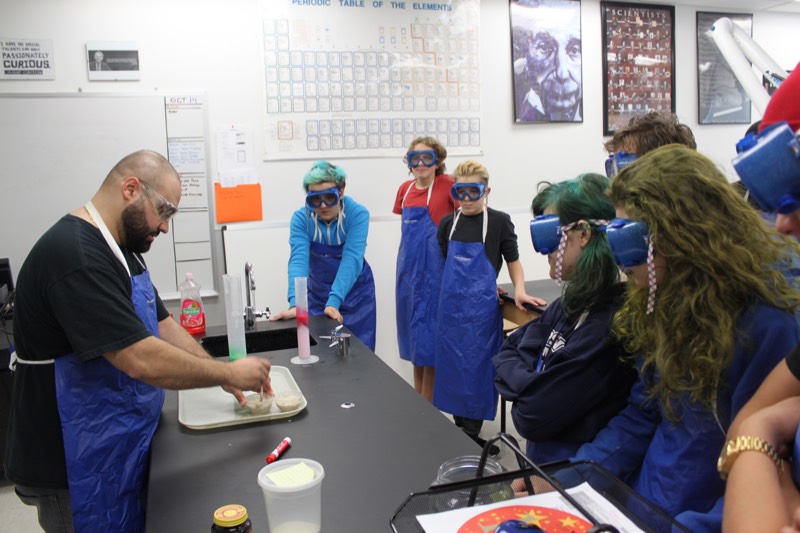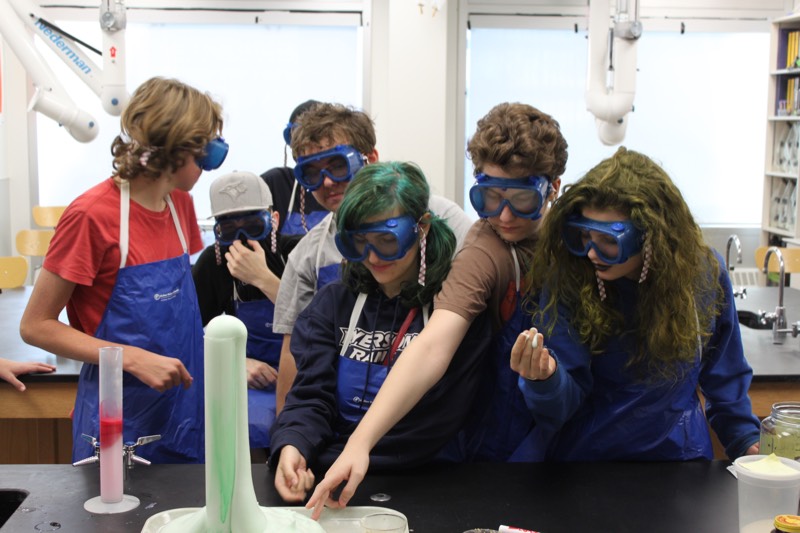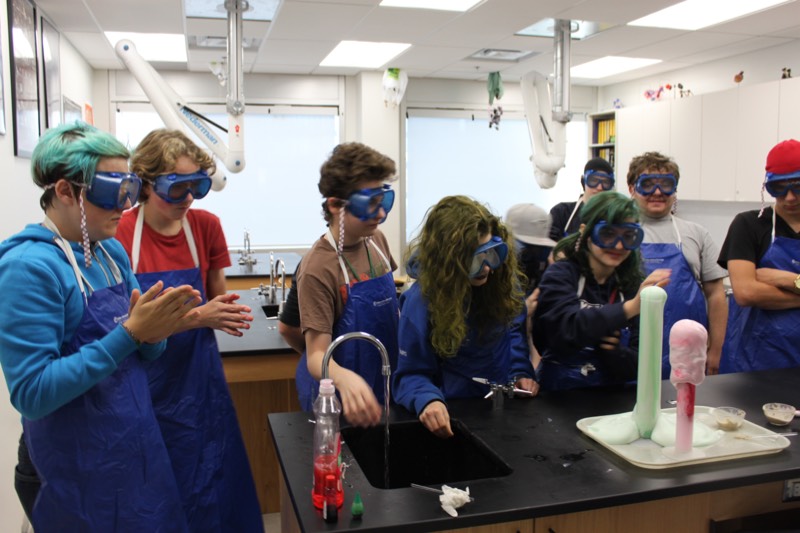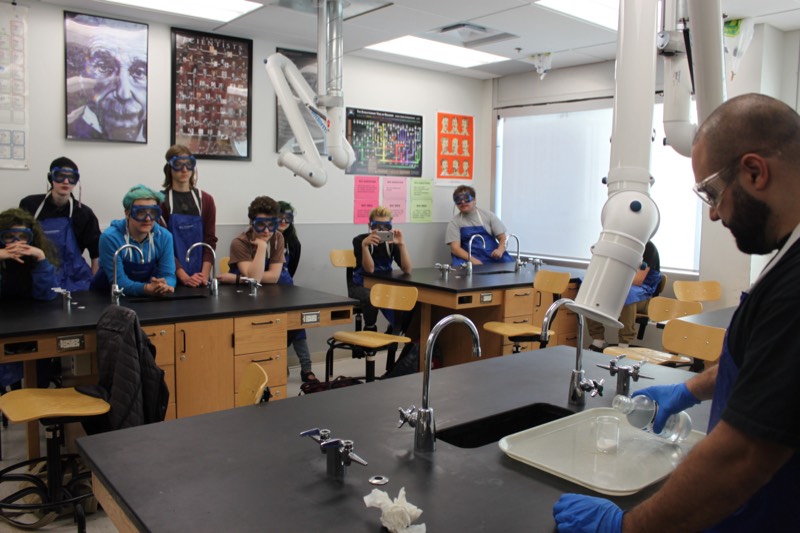Chemical reactions occur all the time around us. Whether it is a cookie baking in the oven or a battery producing electricity, chemical reactions drive the world around us whether we notice them or not. There are eight types of chemical reactions, four of which we focus on in grade 10 chemistry. These reactions include:
- synthesis
- decomposition
- single displacement
- double displacement
Learning about the chemical formulas that represent chemical reactions although important, is no where near as exciting as seeing what these chemical reactions look like in real life. In order to help students see past the equations, we can carry out slightly scaled up chemical reactions in the classroom to bring them to life. One such reaction that is a perennial favourite is the “Elephant Toothpaste” reaction, so called because the end product looks like a large tube of toothpaste being squeezed out of a bottle large enough to clean an elephant’s teeth.
The reaction is an example of a decomposition reaction. Hydrogen peroxide is mixed with some dish soap (and food colouring for effect) and then mixed with either potassium iodide or baker’s yeast mixed with warm water. The hydrogen peroxide decomposes into water and oxygen. With the aid of the potassium iodide or baker’s yeast as catalysts to speed up the reaction, the oxygen enters the soap bubbles causing the substance to quickly expand out of its container and overflow like squished toothpaste all over the table. The result is an exited room of students and a happy science teacher.
Another demonstration of a chemical reaction that is very captivating is the dehydration of sugar by sulphuric acid. In this demonstration, sulphuric acid is added to plain granulated sugar. Sulphuric acid being a dehydrating agent strips the sugar molecules of water leaving behind carbon. The outcome looks like a spectacular display of what looks like a giant snake appearing out of no where and which is quite the spectacle to witness.
Check out more photos from this event on our Facebook page!





